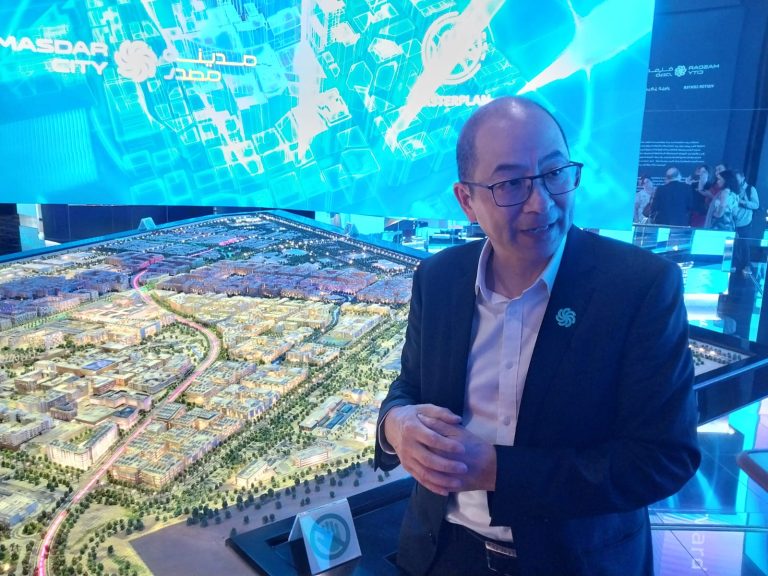Abu Dhabi – In 2008, when the environment was not a hot topic, construction began in Abu Dhabi, the capital city of the United Arab Emirates, of the country’s first sustainable city. Today, 15 years later, climate change is a global concern, and Masdar City has extensive experience in trying to make sustainability fit into the real lives of a population. The project has now started its net-zero buildings phase.
Speaking to a group of Brazilian journalists who visited the project this Tuesday (12), Masdar City’s associate director of Sustainability and Corporate Social Responsibility (CSR), Chris Wan (pictured above), said that the project has five proposed zero-carbon buildings. Two were completed, two are under construction, and a mosque with full emissions compensation was also announced this month.
Regarding the buildings, Wan explained that “net-zero” means that they will produce clean solar energy in an amount greater than or equal to their electricity and cooling consumption for one year. Solar panels will be installed on the roof or in the landscaping areas of the buildings to generate sustainable energy.

The Emirati population enthusiastically received the mosque project’s launch, which will be the first in the country and the region with a net-zero proposal. When it was announced, Masdar City’s Head of Design, Lutz Wilgen, told local media that after months of collaboration and consultancy, a design was created for the mosque that combines beauty, cultural significance, functionality, and sustainability.
As a pioneer, when Masdar City was launched, not all current sustainability technologies and solutions existed or were available. Wan reported that many professionals have been involved in the project for a long time and have evolved and experimented to discover the best way to build sustainably. The goal is to be a reference for the sustainable development of the future.
One of Masdar’s focuses is environmental design and building with architecture for the lowest possible energy consumption, whether by making the best use of wind circulation or placing the building above the ground, favoring ventilation, among other possibilities. However, social aspects, habitability, and the projects’ economic model or commercial viability are also at the heart of the city’s design proposal.
Wan said he’s been hearing for a long time that sustainability is a great idea, but it costs a lot of money and can’t be implemented. “We want to be catalysts for change. We have to resolve the relationship between environmental design and the world of budgetary finance,” he said. The idea is to resolve the issue and serve as a scaling model. Masdar City is already a reference for other countries. This year alone, 250 delegations visited the site in search of their expertise, according to Wan.
The journalist traveled at the invitation of the Embassy of the United Arab Emirates in Brazil
Translated by Elúsio Brasileiro




